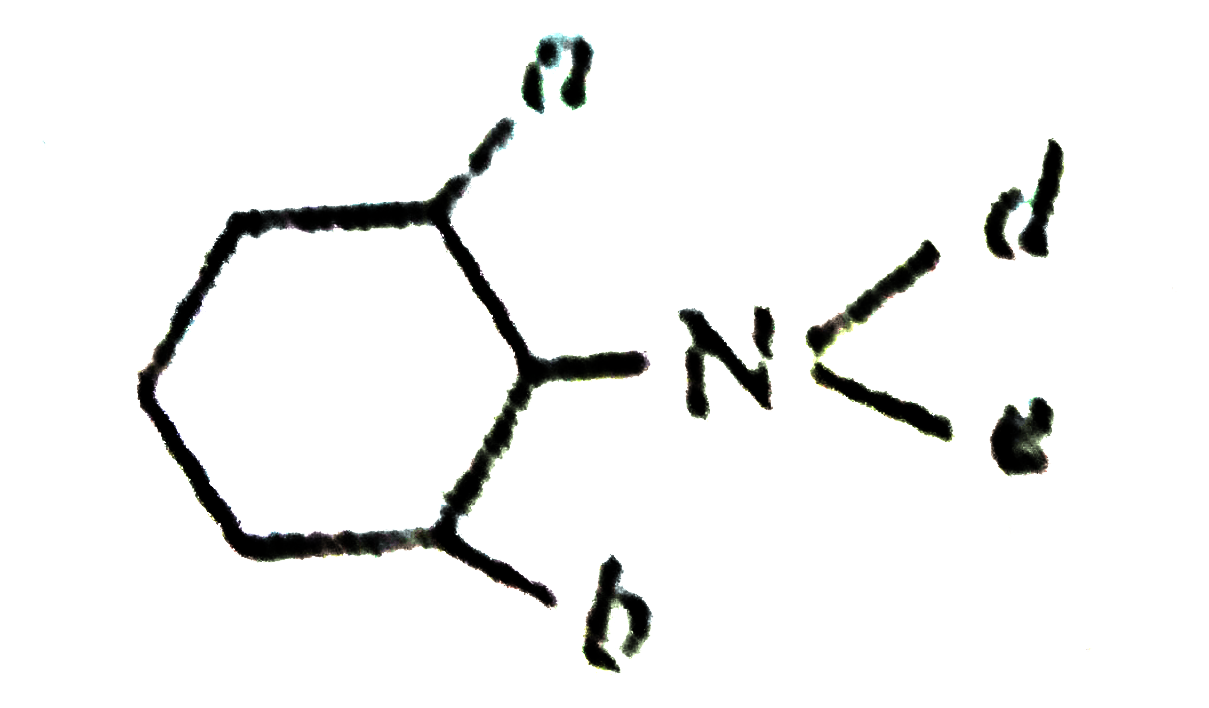Why is butan-2-ol optically inactive ?
To understand why (±)-butan-2-ol is optically inactive, we can break down the explanation into clear steps:
Step 1: Identify the Structure of Butan-2-ol
Butan-2-ol has the following structure:
- It is a four-carbon alcohol with the hydroxyl (-OH) group attached to the second carbon.
- The structure can be represented as:
CH3−CH(OH)−CH2−CH3
Step 2: Determine the Chiral Center
- In butan-2-ol, the second carbon (C2) is a chiral center.
- A chiral center is a carbon atom that is attached to four different groups or atoms.
- In this case, C2 is attached to:
- A methyl group (CH3)
- A hydroxyl group (OH)
- An ethyl group (CH2CH3)
- A hydrogen atom (H)
Step 3: Understand Enantiomers
- A compound with a chiral center can exist in two forms that are mirror images of each other, known as enantiomers.
- These enantiomers are designated as (+) and (−) based on their ability to rotate plane-polarized light:
- (+) is dextro-rotatory (rotates light to the right)
- (−) is levo-rotatory (rotates light to the left)
Step 4: Recognize the Racemic Mixture
- The notation (±) indicates a racemic mixture, which contains equal amounts of both enantiomers.
- In this case, (±)-butan-2-ol consists of equal parts of the (+) and (−) forms.
Step 5: Analyze Optical Activity
- When equal amounts of the two enantiomers are present, their optical activities cancel each other out.
- The (+) enantiomer rotates light to the right, while the (−) enantiomer rotates light to the left by the same degree.
- Therefore, the overall rotation of the mixture is zero.
Conclusion
- Since the overall optical rotation of the (±)-butan-2-ol mixture is zero, it is considered optically inactive.
Summary
(±)-butan-2-ol is optically inactive because it is a racemic mixture of two enantiomers that cancel each other's optical activity.
---
Butan-2-ol has the following structure:
- It is a four-carbon alcohol with the hydroxyl (-OH) group attached to the second carbon.
- The structure can be represented as:
CH3−CH(OH)−CH2−CH3
- In butan-2-ol, the second carbon (C2) is a chiral center.
- A chiral center is a carbon atom that is attached to four different groups or atoms.
- In this case, C2 is attached to:
- A methyl group (CH3)
- A hydroxyl group (OH)
- An ethyl group (CH2CH3)
- A hydrogen atom (H)
- A compound with a chiral center can exist in two forms that are mirror images of each other, known as enantiomers.
- These enantiomers are designated as (+) and (−) based on their ability to rotate plane-polarized light:
- (+) is dextro-rotatory (rotates light to the right)
- (−) is levo-rotatory (rotates light to the left)
- The notation (±) indicates a racemic mixture, which contains equal amounts of both enantiomers.
- In this case, (±)-butan-2-ol consists of equal parts of the (+) and (−) forms.
- When equal amounts of the two enantiomers are present, their optical activities cancel each other out.
- The (+) enantiomer rotates light to the right, while the (−) enantiomer rotates light to the left by the same degree.
- Therefore, the overall rotation of the mixture is zero.
- Since the overall optical rotation of the (±)-butan-2-ol mixture is zero, it is considered optically inactive.
(±)-butan-2-ol is optically inactive because it is a racemic mixture of two enantiomers that cancel each other's optical activity.
Topper's Solved these Questions
- ALCOHOLS, PHENOLS AND ETHERSBOOK - MODERN PUBLICATIONCHAPTER - ALCOHOLS, PHENOLS AND ETHERSEXERCISE - Revision Exercises (Short Answer Questions)
12 Videos
- ALCOHOLS, PHENOLS AND ETHERSBOOK - MODERN PUBLICATIONCHAPTER - ALCOHOLS, PHENOLS AND ETHERSEXERCISE - Revision Exercises (CBSE Qs....)
5 Videos
- ALCOHOLS, PHENOLS AND ETHERSBOOK - MODERN PUBLICATIONCHAPTER - ALCOHOLS, PHENOLS AND ETHERSEXERCISE - Revision Exercises (Very Short Answer Questions)( One Word/Very Shord Sentence Answer)
20 Videos
- ALDEHYDES ,KETONES AND CARBOXYLIC ACIDSBOOK - MODERN PUBLICATIONCHAPTER - ALDEHYDES ,KETONES AND CARBOXYLIC ACIDSEXERCISE - UNIT PRACTICE TEST
13 Videos
Similar Questions
Why is Butan-1-ol optically inactive but Butan-2-ol is optically active ?
View Solution(a). Why are alkyl halides insoluble in water?
(b). Why is butan-1-ol optically inactive but butane-2 ol is optically active in nature?
(c). Although chlorine is an electron withdrawing group yet it is ortho para directing in electrophilic aromatic substitution reaction. Why?
View Solution
Knowledge Check
Butan-2-ol is a :
APrimary alcoholBSecondary alcoholCTertiary alcoholDAldehydeButan-2-ol is a :
Aprimary alcoholBsecondary alcoholCtertiary alcoholDdihydric alcoholWhich is optically inactive?
A B
B C
C D
D
(a) Why are alkyl halides insoluble in water ?
(b) Why is Butan-1- ol optically inactive but Butan-2-ol is optically actove ?
(c ) Although chlorine is an electron-withdrawing group, yet it is ortho-para-directing in electrophilic aromatic substitution reactions. Why?
View Solution(a) Why does p-dichlorobenzene have a higher m.p than its o-and m-isomers?
(b) Why is (±) - Butan -2 - ol of is optically inactive?
View SolutionWhich is optically inactive?
View SolutionMeso butane−2,3−diol is optically inactive because
View SolutionButan - 2 - ol is
View Solution
